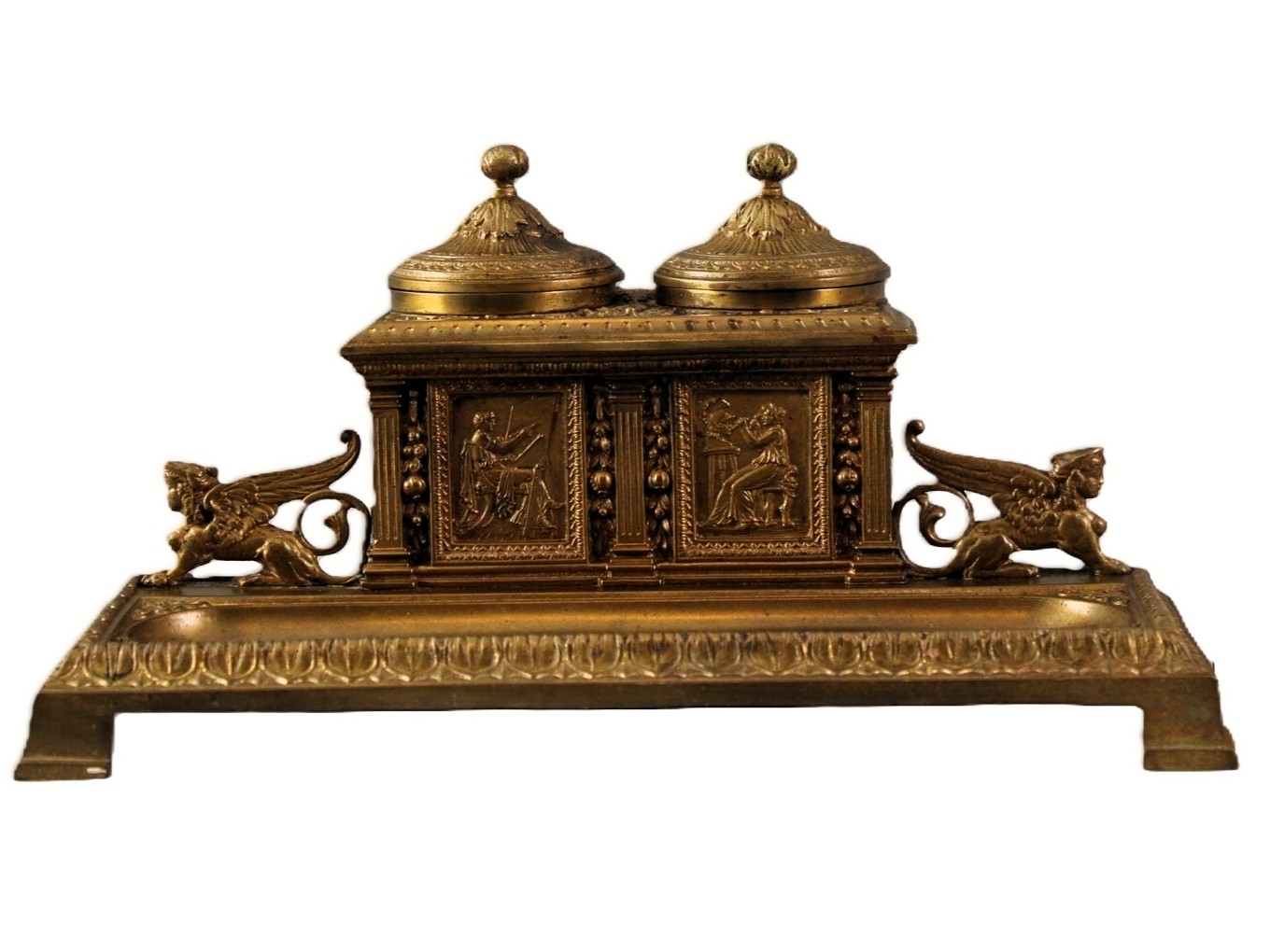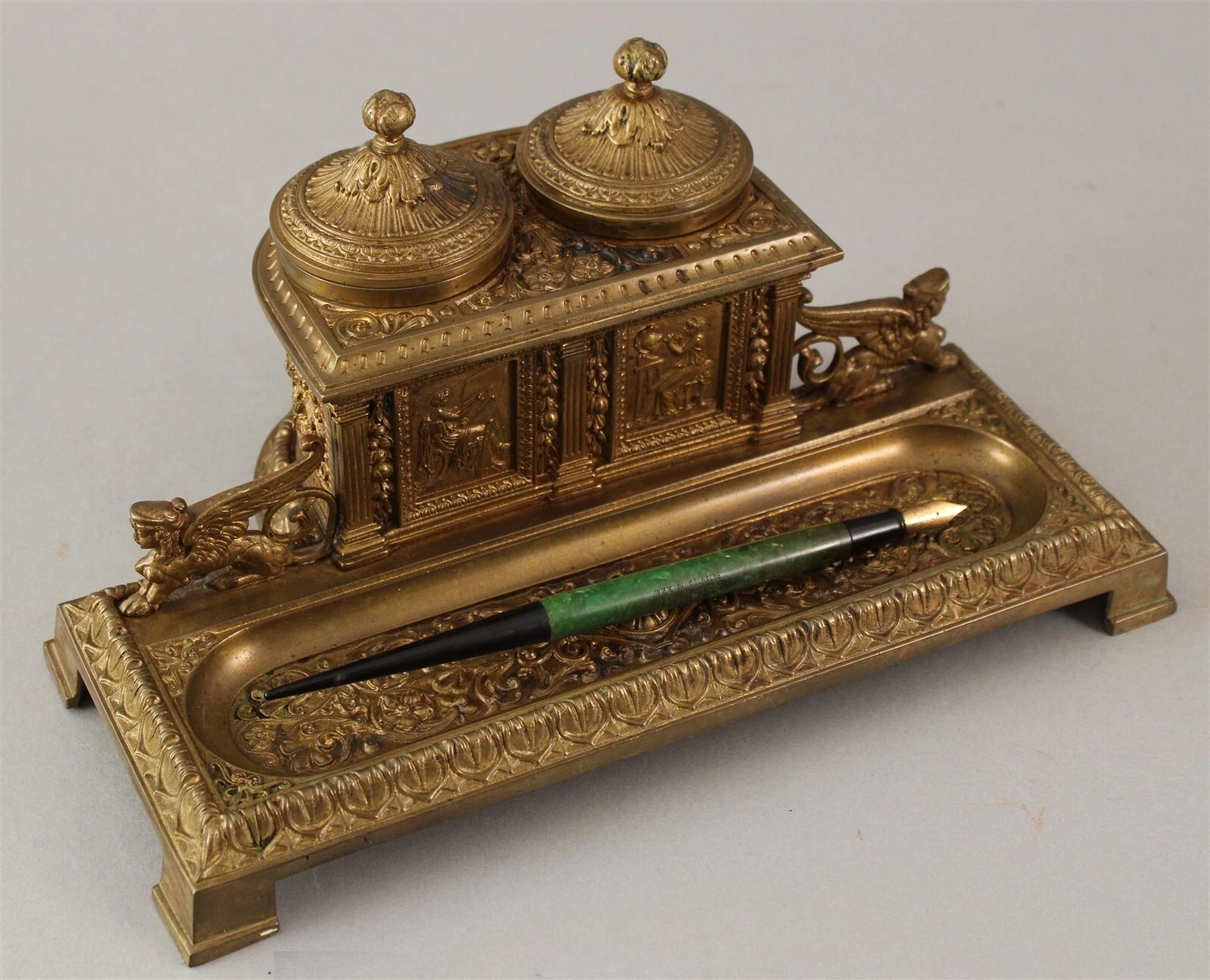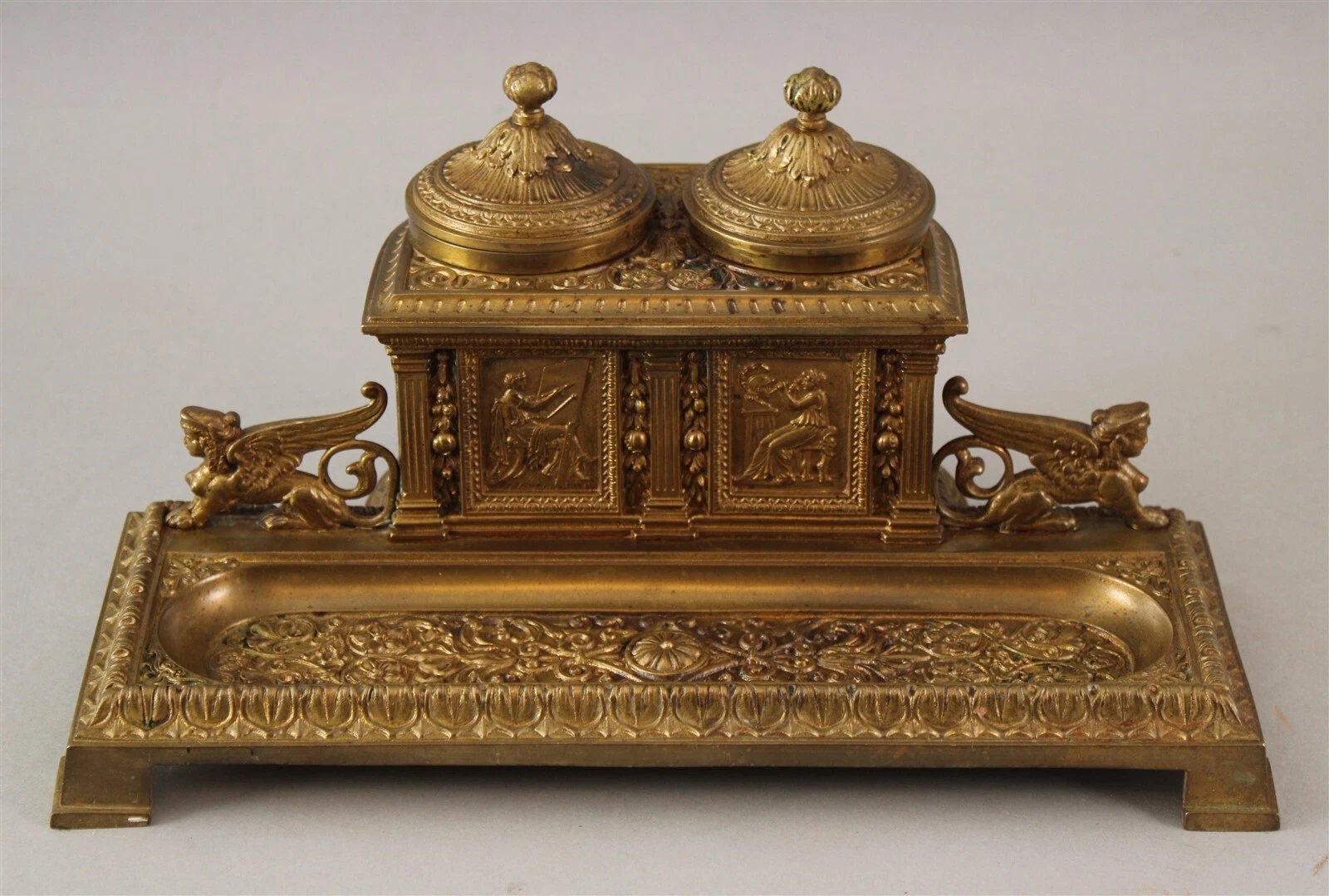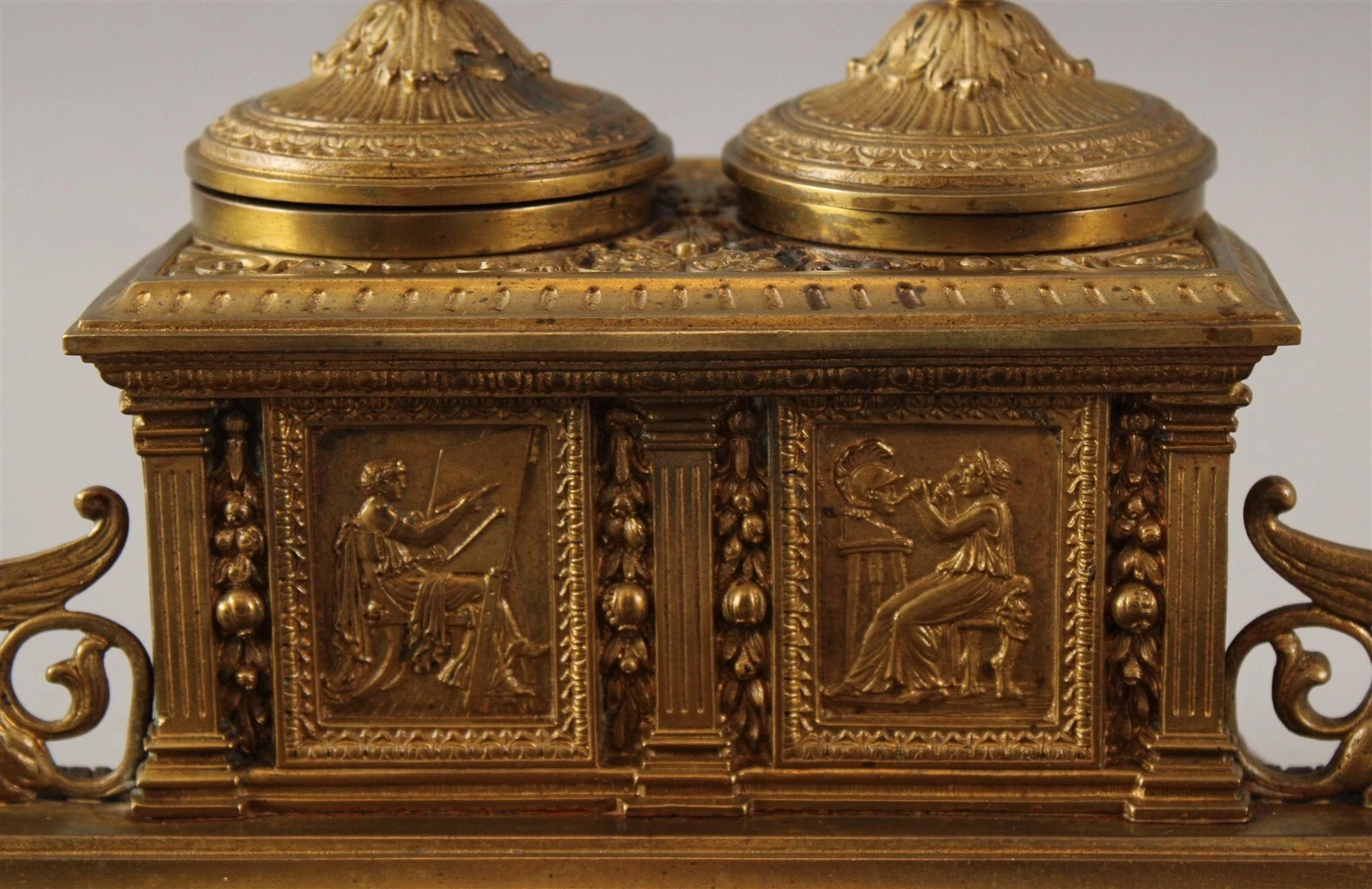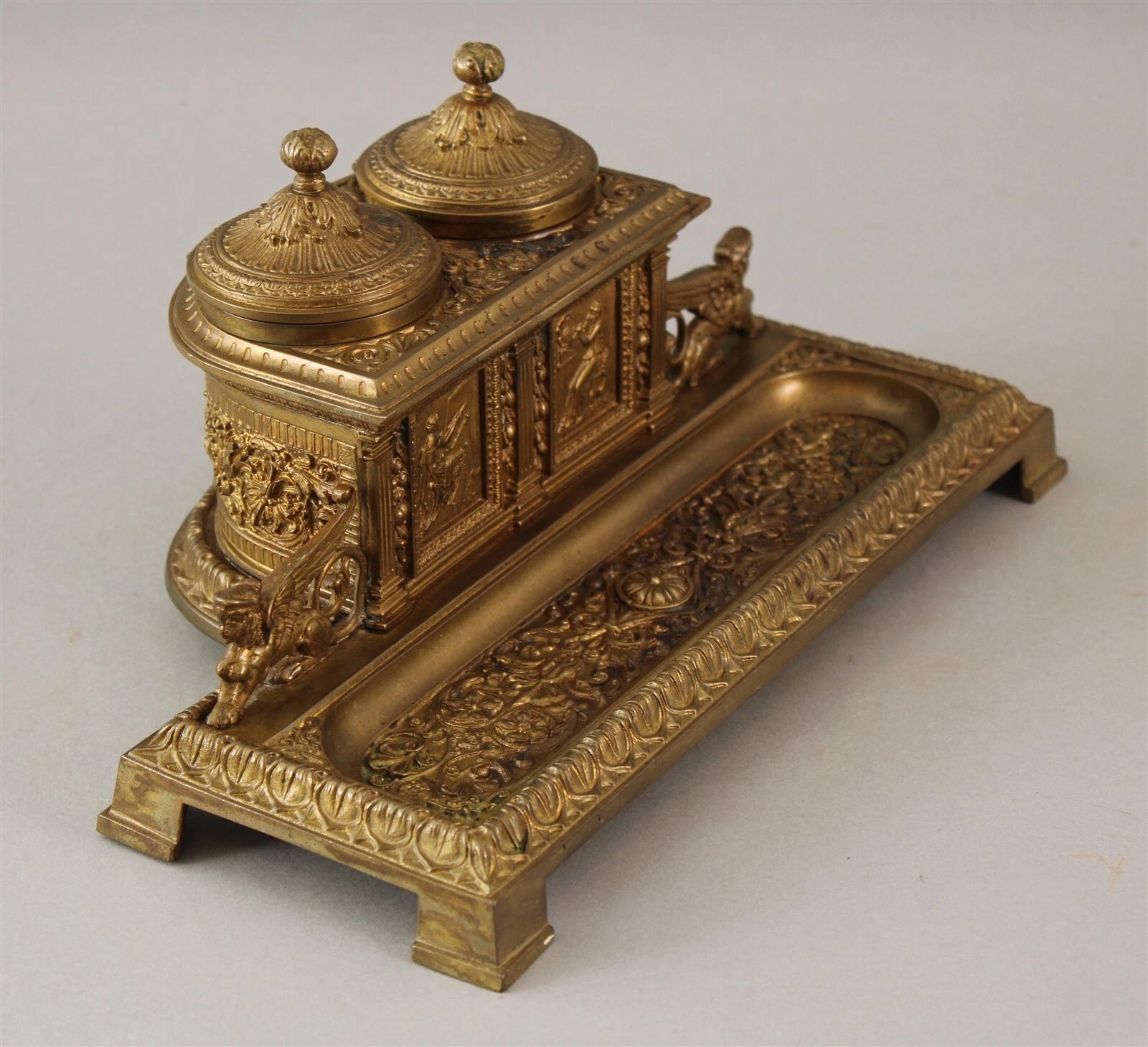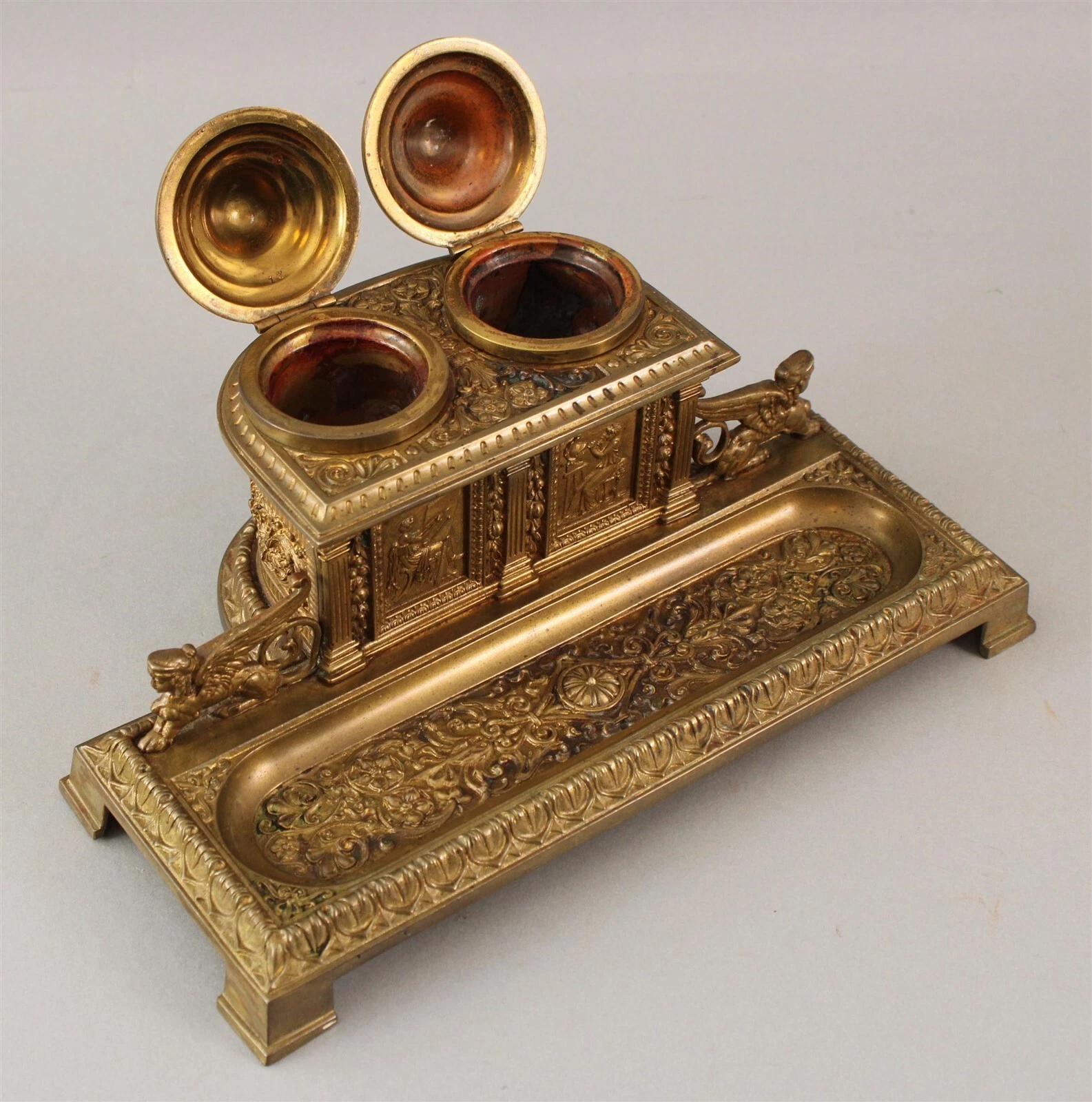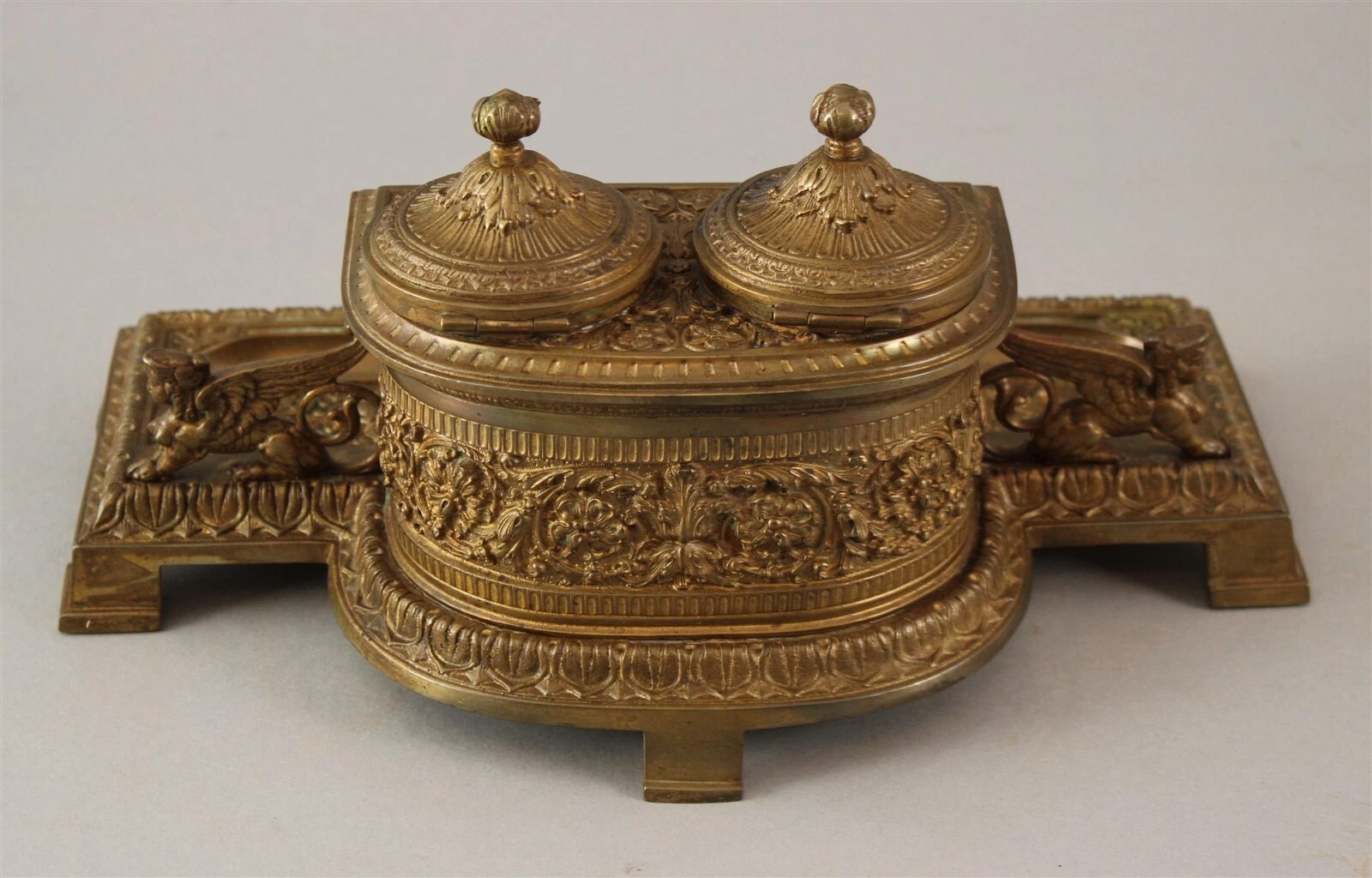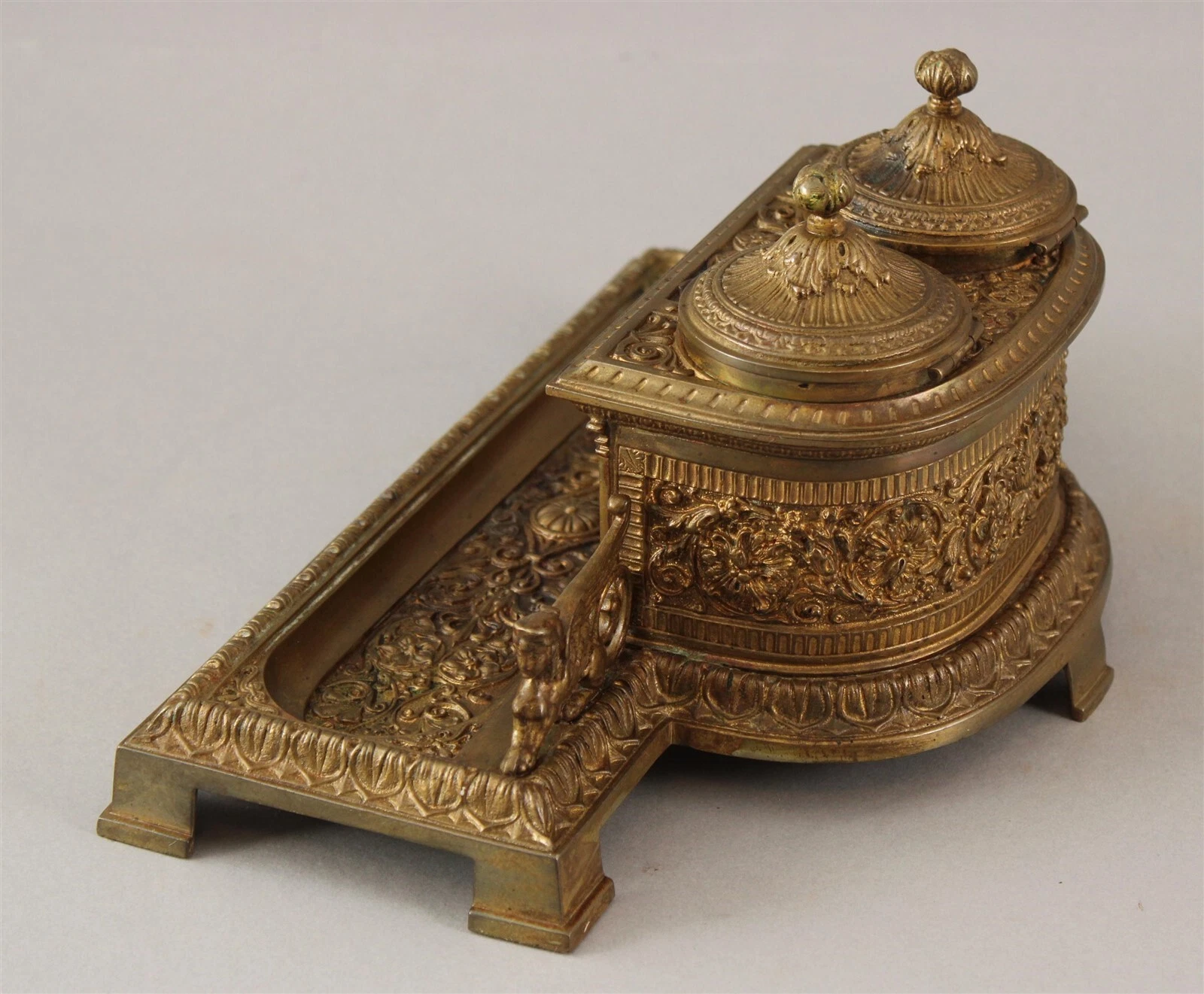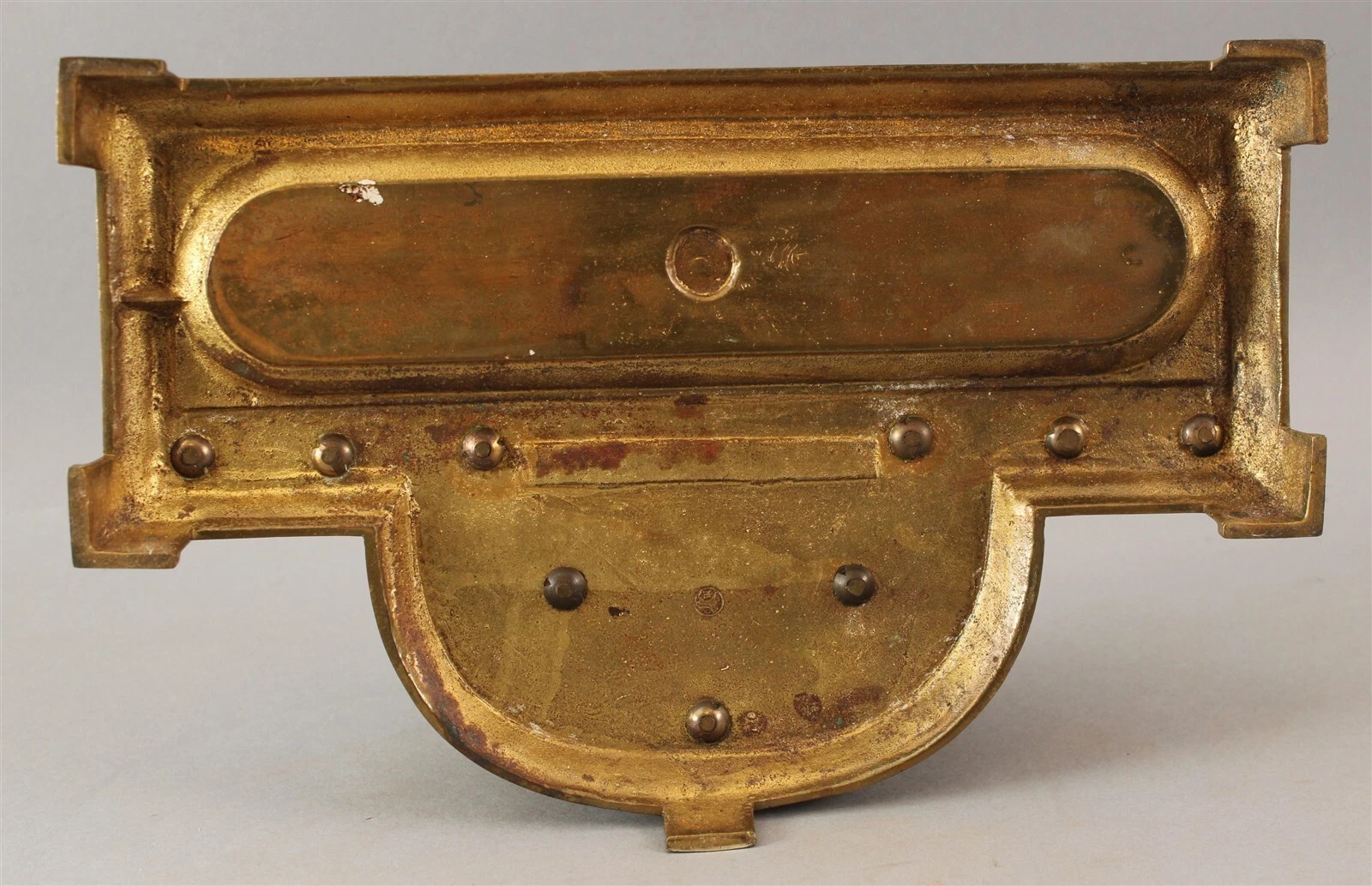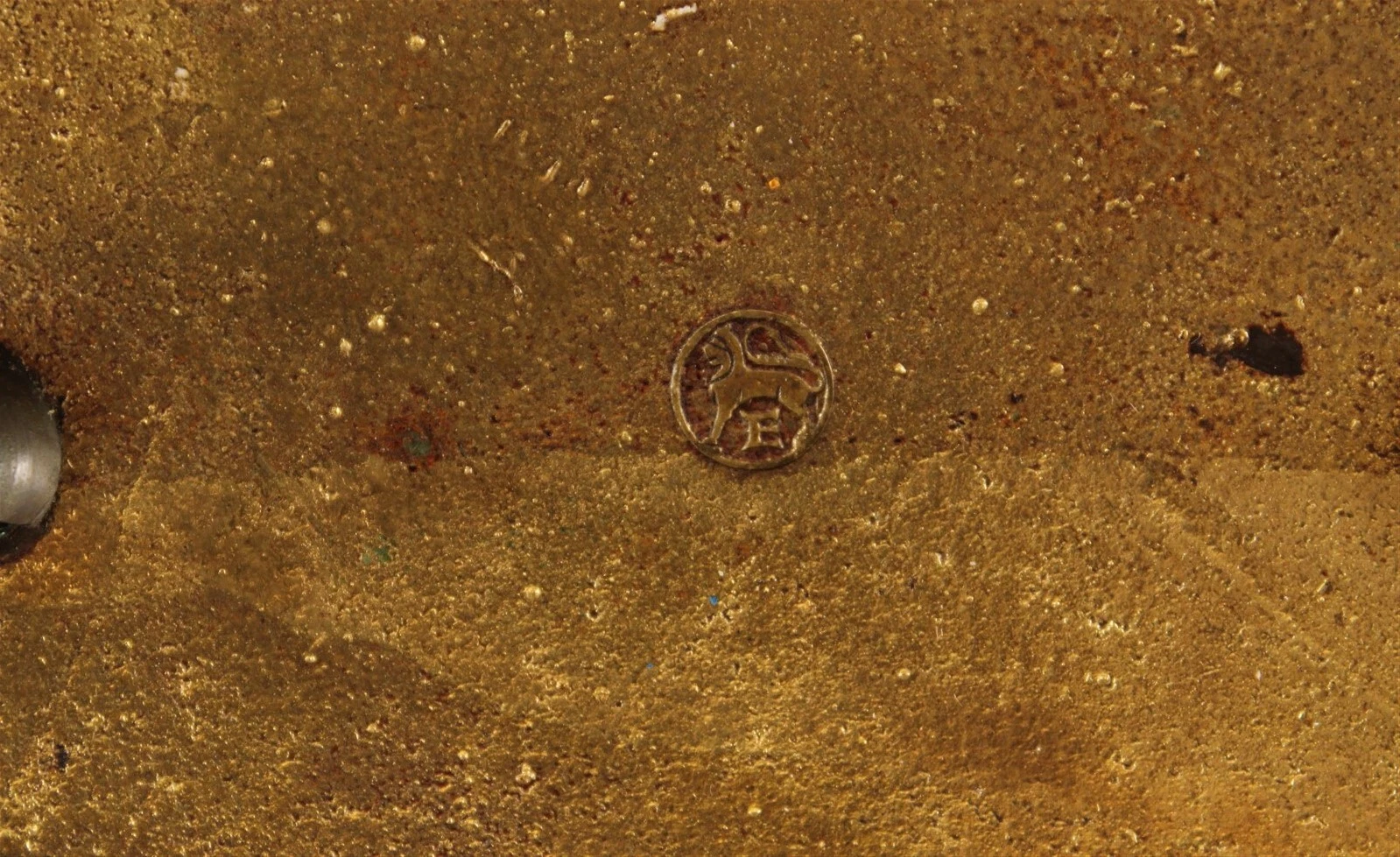
Egyptian Revival Bronze Inkstand
| Categories | Figural - Mythology; Literature; Religion; Fictional |
| Type | Egyptian Revival |
| Material | Gilt Bronze |
| Markings | See Narrative |
| Manufacturer | Erhard & Söhne |
| Origin | Germany |
| Date or Era | circa 1890 |
| Measuring | 10 ¾” x 6 ¾” x 5 ¼” high |
This 19th-century bronze standish (inkstand), distinguished by its Egyptian Revival design is a product of the German firm Erhard & Söhne. It’s a testament to the fascination with ancient Egypt that swept through Europe after archaeological discoveries and Napoleonic campaigns.
Description of the Inkstand
- Material and Construction: The inkstand is made of bronze. The dominant aesthetic is an interpretation of Egyptian Revival style. This style, popular in the 19th century, incorporated motifs and forms inspired by ancient Egyptian art and architecture.
- Winged Sphinxes: The most prominent Egyptian elements are the winged sphinxes that flank the inkwells on either side. These mythical creatures, with the body of a lion and the head of a human (female), are depicted with spread wings. Their presence immediately evokes ancient Egyptian iconography.
- Hieroglyphic-like Details: The surface of the standish, particularly around the base and central platform, features stylized patterns that resemble hieroglyphs or Egyptian border designs, further reinforcing the theme.
- Classical Figures – Painter and Sculptor: Depicted prominently in the front of the inkstand are two classical figures, likely symbolizing the arts or intellectual pursuits:
- One figure is a painter holding a palette.
- The other figure is a sculptor, shown with a mallet and chisel, working on a small bust.
- These figures, while classical (Greek/Roman) rather than strictly Egyptian, were often incorporated into eclectic 19th-century designs that celebrated the arts and knowledge.
- Inkwells and Lids: The standish incorporates two inkwells. Each inkwell is covered by a hinged lid.
- Pen Tray: In the front extending across the base, there is a pen tray.
- Manufacturer Mark: The underside of the base is marked by “Erhard & Söhne.” This German firm was renowned for its high-quality metalwork and decorative objects, particularly during the 19th and early 20th centuries, often working in Revival styles.
Historical Context and Erhard & Söhne
This inkstand is a prime example of the Eclecticism and Revivalism popular in 19th-century decorative arts. After Napoleon’s campaigns in Egypt in the late 18th century and major archaeological discoveries (like the Rosetta Stone in 1799), there was a resurgence of interest in Egyptian motifs throughout Europe and America. This “Egyptomania” influenced architecture, furniture, and decorative items like this standish.
Erhard & Söhne (German Manufacturer):
- Founding: Founded in 1844 by Carl Erhard in Schwäbisch Gmünd, Germany. His sons, Julius and August Erhard, later joined the company, leading to the “Söhne” (Sons) in the name.
- Specialization: The firm quickly became known for its innovative and high-quality metalwork. They specialized in:
- Brass, bronze, and copper objects.
- Decorative metalware: Inkstands, desk sets, boxes, picture frames, and other household items.
- Ormolu (gilt-bronze) mounts and decorative elements for furniture and porcelain.
- Later, they were pioneers in the use of tortoiseshell and mother-of-pearl inlay on metal, creating particularly distinctive pieces.
- Quality and Innovation: They were celebrated for their sophisticated manufacturing techniques and attention to detail. They were one of the first German companies to use electroplating technology for gilding.
- Peak Production: Their peak period of production and influence was from the late 19th century through the early 20th century.
Sold for $189 in June 2025
Content disclaimer. The information posted is the owner’s best knowledge and may not have been vetted by the SOIC. We welcome comments, corrections, and additions, working to make our website information comprehensive and accurate.
Join the Society of Inkwell Collectors (SOIC) – it’s free!
Founded in 1981 as a non-profit organization,
we are documenting inkwells (and accessories).
We’re here to help and inform!
